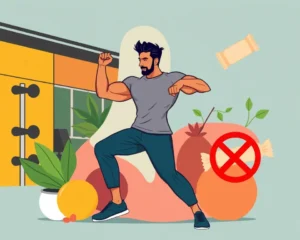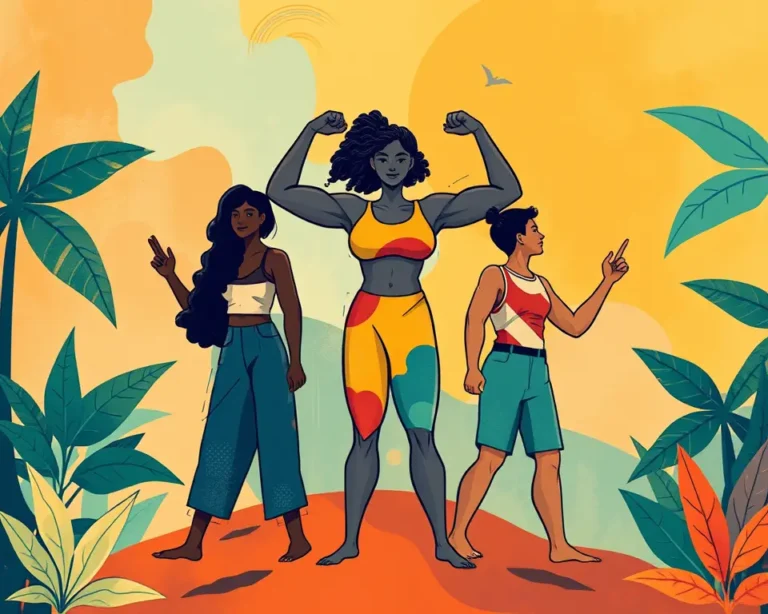Wellness is more than just a trend; it’s a return to self, rooted in culture and community. At Puerto Rico’s largest wellness event, “Me, Myself & I,” I experienced firsthand how fitness tech can embrace inclusivity, meeting people where they are and honoring their lived experiences. As a Latina millennial in wellness media born and raised in Puerto Rico, this event felt like home, offering a glimpse into a future where fitness truly represents and serves diverse communities.
A Wellness Event Rooted in Culture
“Me, Myself & I,” held annually in the heart of Puerto Rico’s Botanical Garden of Caguas, is an immersive wellness event created by Melissa Jiménez and Nicole Bosch. These passionate Puerto Rican women recognized a gap in how wellness was being delivered to women on the island. What started as a small gathering a decade ago has blossomed into a full-day experience, drawing thousands of attendees who, like me, often don’t see themselves reflected in mainstream fitness spaces.
Challenging the Narrative
For too long, mainstream wellness has overlooked the rhythms, values, and lived experiences of Hispanic communities. This year, “Me, Myself & I” and Peloton challenged that narrative, demonstrating the power of culturally inclusive fitness. The event was a vibrant space filled with mostly Latina millennials and Gen Zers, all seeking a wellness experience that resonated with their identities.
Peloton’s Presence: More Than Just a Flex
Peloton’s participation at “Me, Myself & I” was not just a brand activation; it was a statement. It signaled that fitness tech brands are starting to pay attention to the communities they aim to serve. Peloton instructors Camila Ramón, Mariana Fernández, and Rad Lopez led classes in Spanish, connecting with attendees on a deeper level.
The Power of Representation
As a Peloton app user for years, I know firsthand how impactful it is to see instructors who reflect my culture and speak my language. Camila Ramón, a Peloton instructor and headliner at the event, shared, “One of my main missions is to have as many people moving as possible and making them feel good about moving and exercise.”
Fitness Tech for All Abilities
Beyond cultural inclusivity, the event also highlighted the importance of fitness tech that caters to diverse physical abilities. Inclusive fitness is about customizing exercise routines to meet the unique needs of individuals, regardless of age, physical condition, or limitations.
Adaptive Equipment and Technology
Adaptive fitness utilizes specialized equipment designed for people with different abilities, such as:
- Adaptive Cardio Machines: Arm bikes, seated ellipticals, and recumbent bikes allow for cardiovascular exercise without standing.
- Wheelchair-Accessible Weight Machines: Strength training equipment designed for seated use or with one-handed operation.
- Stability Balls and Balance Pads: Tools to improve balance and core strength.
- Adaptive Grips and Cuffs: Attachments that make it easier for individuals with limited hand function to engage in strength training.
- Smart Prosthetics: Advanced prosthetic limbs integrated into workout routines.
Technology Aids
- Virtual Reality (VR) Systems: VR creates immersive, engaging workout experiences tailored to various ability levels.
- Exergaming: Video games designed for exercise provide motivating, adaptive workouts.
- Biofeedback Devices: These tools help individuals monitor their progress and adjust their efforts, which is especially useful for those with sensory impairments.
Making Fitness Accessible
Ensuring access to proper equipment and technology is vital for creating an accessible and welcoming environment. Some standard exercise equipment is automatically inclusive, like cable columns or ski trainers. Other equipment might need small adaptations, such as adding cuffs instead of handles for upper-body exercises. Even simple solutions like cuffs and ACE bandages can make equipment more accessible for individuals without grip strength.
The Rise of Inclusive Fitness
Inclusive fitness is more than just a trend; it’s an essential pillar shaping the future of the fitness industry. It’s about creating equitable health and wellness opportunities for everyone, regardless of their abilities.
Key Components of Inclusive Fitness
- Customized Programs: Tailoring exercise routines to meet individual needs and abilities.
- Adaptive Equipment: Utilizing specialized equipment for people with different abilities.
- Focus on Functionality: Emphasizing improvements in daily life functionality and independence.
- Inclusive Mindset: Creating a welcoming environment for people of all abilities and fitness levels.
- Technological Innovations: Using wearable technology, app-based workouts, and online platforms to provide diverse training regimens.
Benefits of Inclusive Fitness
- Improved physical and mental well-being
- Increased independence and functionality
- Enhanced quality of life
- Greater community engagement
- Empowerment and a sense of belonging
Creating an Inclusive Fitness Environment
Creating an inclusive fitness environment requires a multifaceted approach:
- Individualized Approach: Recognizing that even individuals with similar disabilities have unique strengths and needs.
- Welcoming Environment: Ensuring accessible equipment and trained staff on inclusive practices.
- Small Changes: Making incremental modifications to programming, communication, and lesson structures.
- Universal Design for Learning (UDL): Applying principles of UDL to offer multiple ways to engage with exercise.
- Technology for Accessibility: Using video demonstrations, adaptive fitness apps, and visual workout schedules.
- Collaboration: Working with families, community organizations, and special education professionals.
- Openness to Learning and Adapting: Continuously seeking ways to improve and meet diverse needs.
Simple Adaptations for Existing Equipment
- Tactile markings on equipment to identify important information or settings.
- Tactile maps to help individuals navigate the facility.
- Bump-ons on controls for ‘Start’, ‘Speed’, ‘Incline’, and ‘Stop’.
- Larger balls with ball bearings inside for visually impaired individuals.
- Good color contrast on gym equipment controls.
Gyms Embracing Inclusivity
Some gyms and fitness centers are embracing inclusivity by offering memberships tailored to individuals with disabilities. These facilities often feature accessible equipment, knowledgeable trainers, and accessible features like wide aisles, ramps, and accessible restrooms.
Examples of Inclusive Gym Equipment
- Motomed Bike: An accessible bike that allows you to exercise your arms and/or legs, assisting your movement or adding resistance depending on your level.
- Litegait: A body weight support system that helps people safely improve walking and balance.
- Nustep Cross Trainer: A cardio option accessible to people who can transfer from chair to chair, allowing access to arm and leg fitness training.
The Future of Fitness is Inclusive
The future of fitness is promising, bringing forward innovative solutions designed to embrace everyone, regardless of capability. As the focus on equitable health and wellness grows stronger, the fitness industry is witnessing groundbreaking shifts toward embracing diversity.
Emerging Trends in Inclusive Fitness
- Virtual reality fitness experiences
- Interactive fitness apps tailored to all abilities
- Community-focused spaces
These trends are designed to foster inclusivity, ensuring that all individuals have access to fitness opportunities. Equally important, they emphasize the value of personalized fitness solutions to meet the specific needs of diverse populations.
Conclusion
My experience at “Me, Myself & I” in Puerto Rico was a powerful reminder that wellness should be accessible and inclusive for all. By embracing cultural sensitivity, adaptive technology, and a commitment to meeting diverse needs, the fitness industry can create spaces where everyone feels welcome, empowered, and able to thrive. As we move forward, let’s continue to challenge the status quo and build a future where fitness truly reflects the rich tapestry of our global community.







